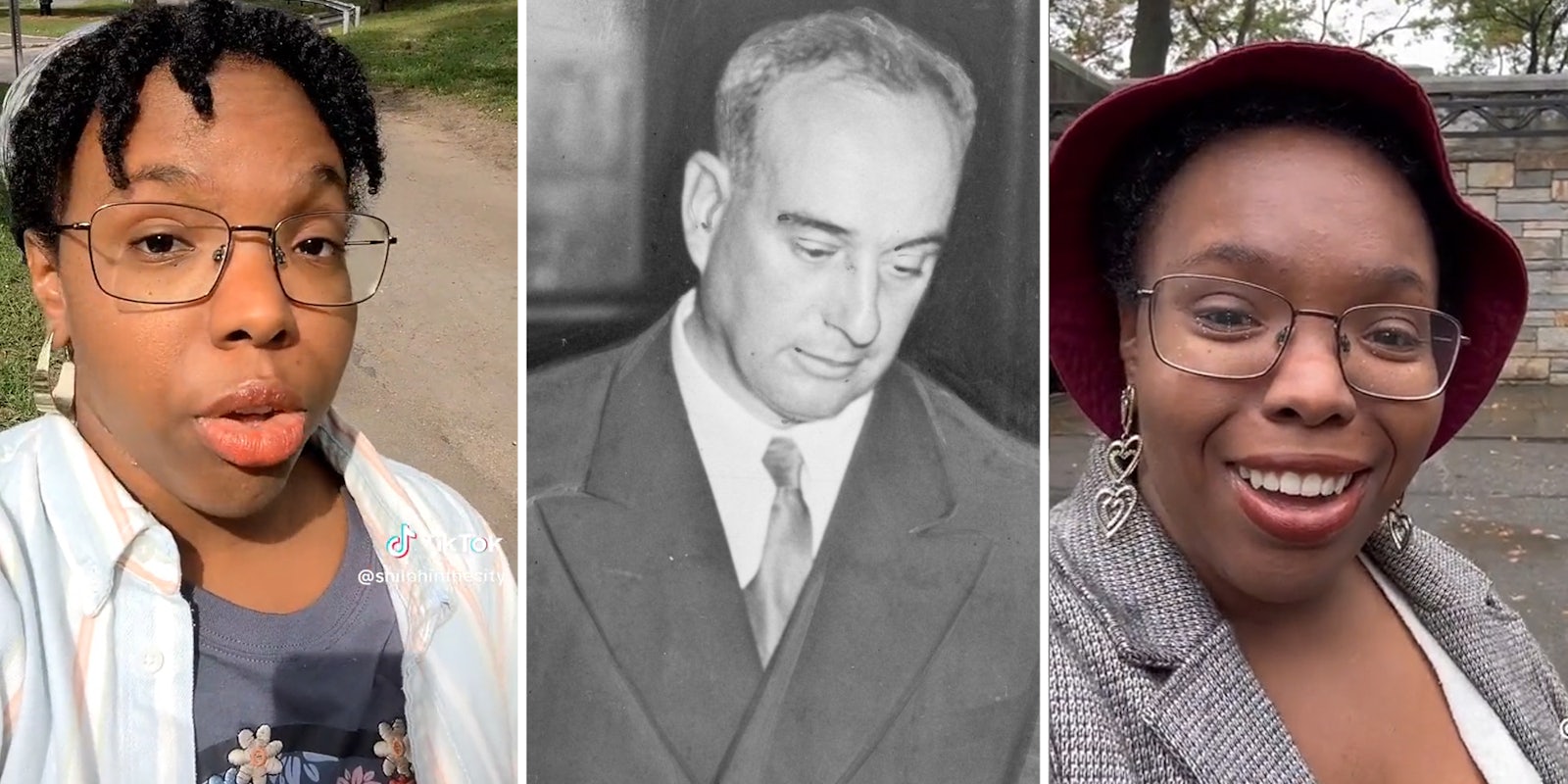After an architecture TikToker called out a racist decoration in the a structure in NYC’s Riverside Park, the decoration was removed.
In a TikTok posted on September 16, Shiloh (@shilohinthecity) a NYC-based TikToker whose content focuses on the city’s architecture, called out a racist detail that was present in a structure in one of NYC’s famous parks, Riverside Park. The detail—metal monkeys that were painted black and shown hanging by their wrists—was part of a restroom structure in Ten Mile River Playground, a part of the park near Harlem, a historically Black neighborhood in Manhattan.
Shiloh says that the detail was referenced in journalist Robert Caro’s The Power Broker, a famous biography of Robert Moses, who was a landmark New York City urban planner. In her September TikTok, she says that she went to Riverside Park to see if the monkeys were still present. She discovers, to her disappointment, that they are.
Shiloh explains that other restrooms in Ten Mile River Playground have trellises with decorative features such as waves, and that the monkeys featured at the Harlem restroom are not found anywhere else in the park.
“In this Harlem restroom, Robert Moses decided to decorate it with monkeys,” Shiloh says, while showing the monkeys in her TikTok. “Given Moses’ feelings about Black people, I’m going to need a lot of convincing that this wasn’t done with disrespect.”
Shiloh goes on to say that she is in need of a Ouija board—because she wants to fight Moses’ ghost. On Tuesday, Shiloh’s initial TikTok had over 40,000 views.
@shilohinthecity When I read this in The Power Broker last night, it actually brought tears of anger to my eyes. I knew I had to rush over to Harlem the next day to see if, all these decades later, these monkeys were still there. It is disappointing that they are. Source: The Power Broker by Robert Caro, pages 559-560 Also, huge thank you to @fakebenjay on IG; your post helped me find the location of this playground. There is a discussion in the comment section of @fakebenjay ‘s post which points out that monkeys also exist at a playground on 83rd Street, but the commentors also note that the monkeys in Harlem are distinctly different from the 83rd Street monkeys. The monkeys at Ten Mile River are painted black and have what could be interpreted as shackles around their wrists. It’s also hard to believe that a man as intentional as Robert Moses only coincidentally put monkeys in a Harlem playground. #harlem #robertmoses #nyc #nyctok ♬ original sound – Shiloh | NYC Guide
But yesterday, Shiloh was happy to report that the monkeys have been removed from the restroom near Ten Mile River Playground. In a follow up TikTok, she goes to Riverside Park and shows the updated restroom structure.
“I never thought I’d be happy to see something lose its decoration,” Shiloh says in her video. “But I am ecstatic to confirm that Robert Moses’ Riverside Park monkeys… they’re now gone!”
Whether or not Moses’ racism affected his other architectural decisions has been a point of contention, outlined in Robert Caro’s Pulitzer-winning biography of Moses, “The Power Broker.” An article from NPR references the biography, reporting that Moses “bulldozed Black and Latino homes to make way for parks, and built highways through the middle of minority neighborhoods.”
Another example of Moses’ racist city planning is described in a tweet from the New York Historical Society, about the claim made in Caro’s biography of Moses that “Long Island parkways had a clearance too low for city buses to pass under.”
“This meant anyone who could not travel by car—including lower income families and people of color—to a long journey over local roads,” the New York Historical Society tweeted. “Effectively barring them from Moses’ parks.”
But a Washington Post analysis about Moses and racism argues that Caro “cast Moses as a racist who made it harder for people of color to visit his properties,” and that this may have not been entirely true, citing a 1999 essay by German professor of sociology Bernward Joerges.
In his essay, Joerges claims that Moses was a “structural racist” rather than an overt one. He writes that Moses “supported and implemented policies he took to be liberal, reformist and above all progressive -policies, nevertheless, which left existing race and class relations unaffected.”
Joerges also alleges that all parkways were built too low for city buses to pass underneath at the time, and that this was done without taking race into account, as its intended goal was to prioritize private car ownership.
However, even today, Black households are less likely to own cars, with only 18% having access. Additionally, people of color make up 60% of public transportation users.
That said, it seems like the Riverside Park Conservancy, an organization that works with the NYC Parks Department, saw the monkeys as a racist jab— Shiloh’s follow up video was precipitated by a comment she received on her initial TikTok about the monkeys from the Riverside Park Conservancy’s official TikTok account.
“Thanks so much for posting this,” the Riverside Park Conservancy commented. “We can confirm that these have been taken down as of a few weeks ago.” In other comments, they say that Ten Mile River playground has been allocated over seven million dollars for upgrades and renovations.
In her second video about Ten Mile River Playground, Shiloh thanks the Riverside Park Conservancy for taking down the monkeys and to everyone that engaged with her initial video.
An article by The Manhattan Institute notes that the monkeys do appear in another playground in Riverside Park near W. 83rd street.
The Daily Dot has reached out to Shiloh, the Riverside Park Conservancy, and Caro via email.



